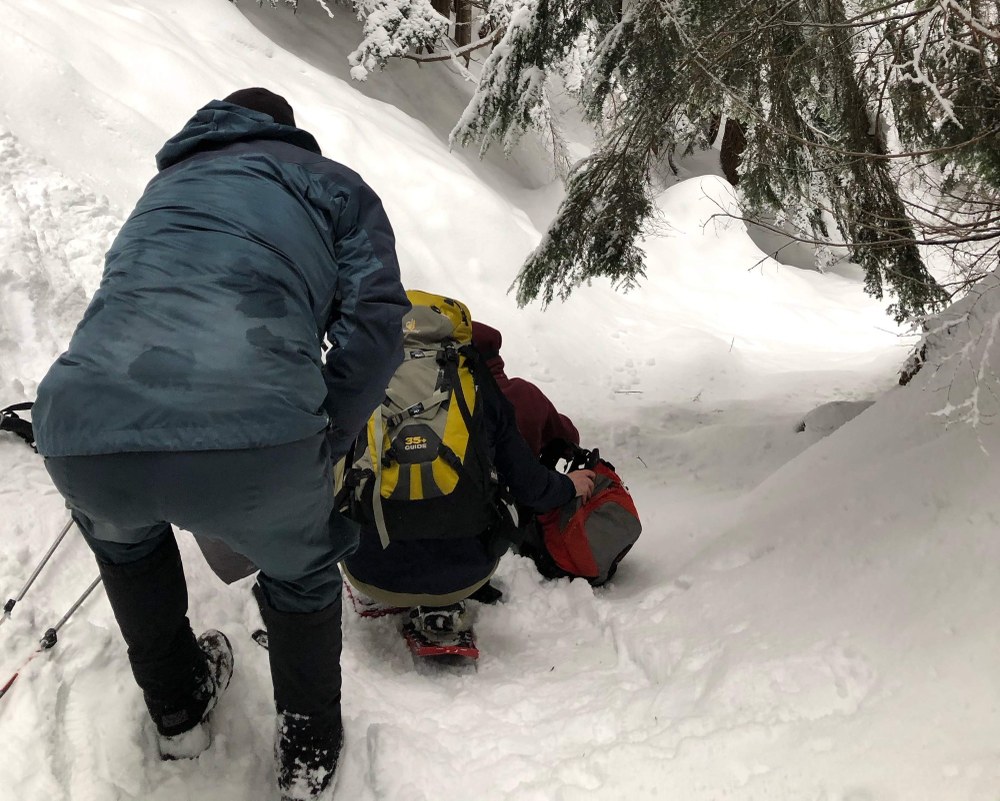
As Mountaineers, we are committed to learning from our experiences. We examine every incident that happens on a Mountaineers trip for opportunities to improve the ways we explore and teach. Our volunteer safety committee reviews every incident report and picks a few each month to share as examples of ‘Lessons Learned’. The trip report below describes what happened on this trip, in the leader’s own words, and outlines the lessons the leader has identified. In some cases, we offer additional key learnings from the incident.
Sharing incidents creates an opportunity to analyze specific incidents and also identify larger incident trends. We appreciate every volunteer trip leader who takes the time to share their incidents and near-misses so that others can benefit. We ask that readers engage critically and respectfully in the spirit of sharing and learning.
Commonwealth Basin, Snoqualmie Pass - 29 December
FROM THE INCIDENT DATABASE: LEADER INCIDENT REPORT
LEADER
Less than 0.5 miles into our snowshoe trip, which was planned to be about 2 miles out and another 2 miles back, a member of our party fell while crossing a small shallow gully. The fall looked minor, but the fallen snowshoer immediately reported feeling a broken arm.
Two members of our party, a Nurse Practitioner and a Registered Nurse, quickly took charge of the injured snowshoer and began an evaluation while the Trip Leader alerted the remainder of the party to layer up and prepare to be stopped for several minutes.
While the injured person was being evaluated, we sent a group of 4 participants to scout a direct route back to the main trail so that, if necessary, we could self-evacuate over the easiest terrain possible. Before the group split, we confirmed that that both parties had cell coverage and were able to communicate with each other. We also specified a short turnaround for the scouting group.
The two medical professionals completed their assessment and determined that the injured snowshoer did have an injury, but was in stable condition and able to self-evacuate. The injured snowshoer's arm was placed in a sling that one of the medical professionals carried in their first aid kit. Upon the return of the scouting party, our re-united 8-person party redistributed the injured party member's gear, and we returned to the cars without incident.
The injured snowshoer had carpooled from home with the trip's co-leader, who was yet another Registered Nurse (yes, we had three medical professionals in our party!). The co-leader drove the injured person to an urgent care facility, where X-rays determined that the injured snowshoer had a complete fracture of the humerus bone (long bone of the upper arm). The snowshoer was discharged with a sling and a referral to see an orthopedist.
Lessons Learned
LEADER
All members of the party responded admirably to a stressful situation. The Trip Leader is especially grateful to two nurses who took charge of our injured party member, but everyone contributed in their own way by offering warm clothing and constructive suggestions, offering to carry gear, scout and break trail, etc. Having a trusted co-leader also worked out well because it made the decision to temporarily split the group an easy one.
Training from the Wilderness First Aid course (WFA), Outdoor Leadership Seminar, and Decision Making in Emergency Situation Seminar came into use, and worked very well. We were able to provide immediate care to the injured snowshoer while at the same time making sure that the rest of the party took care of themselves to avoid hypothermia, etc.
The WFA course and accompanying scenario training gave the leader the wherewithal to start forming an self-evacuation plan even while the injured snowshoer was still being tended to. The evacuation plan included getting the injured person all the way to a definitive care facility, not just back to the trailhead.
I have reflected back over the choice of terrain we were on when the fall occurred, but on reflection I believe it was well within the range of difficultly one expects for a Basic Snowshoe trip, where off trail travel over moderately uneven terrain is the norm.
Add a comment
Log in to add comments.I am moving back to the UK after twenty years here. I will miss the professionalism of the Mountaineers. I'm experienced as a mountaineer in Europe, but I did not hesitate to join the Mountaineers to gain local knowledge of hiking and kayaking in particular. I also soon realized that the greatest benefit of the Mountaineers was being able to join an ad hoc group any day and know that the group would be capable of self-support while waiting for more extensive help if needed. In four years in Royal Air Force Mountain Rescue, there was the same sense as we trained; that every party of five or six had the remainder of the 36 man team available, and the other RAF and local volunteer teams. I will miss the Mountaineers
 David Shema
David Shema